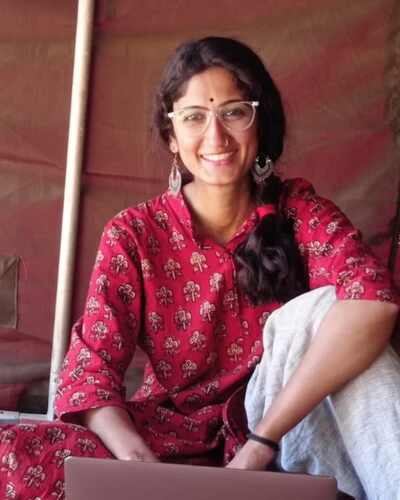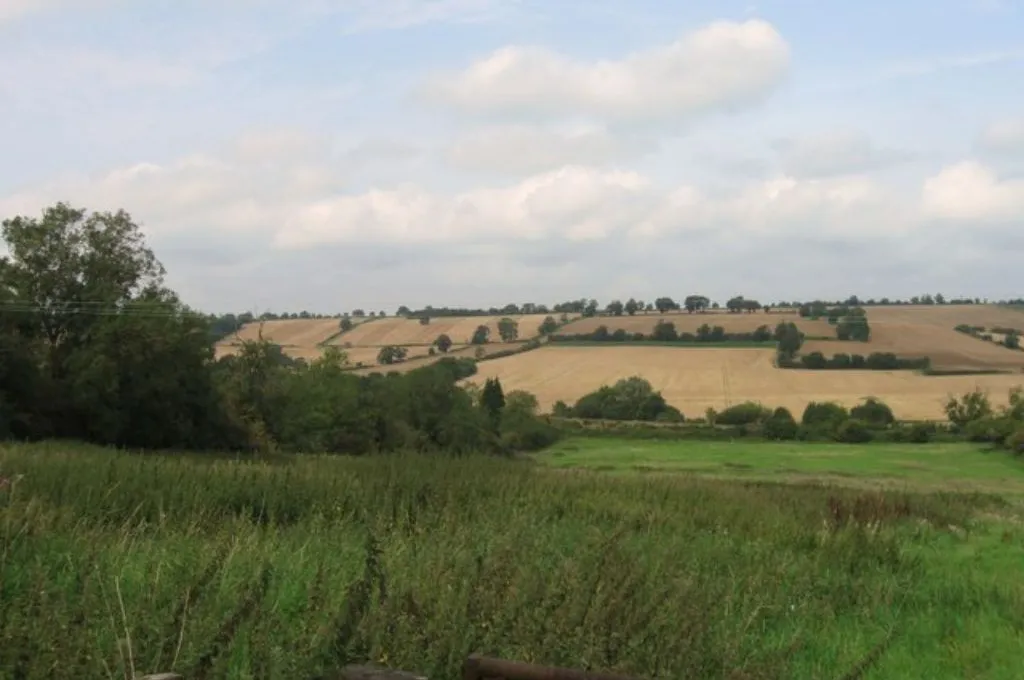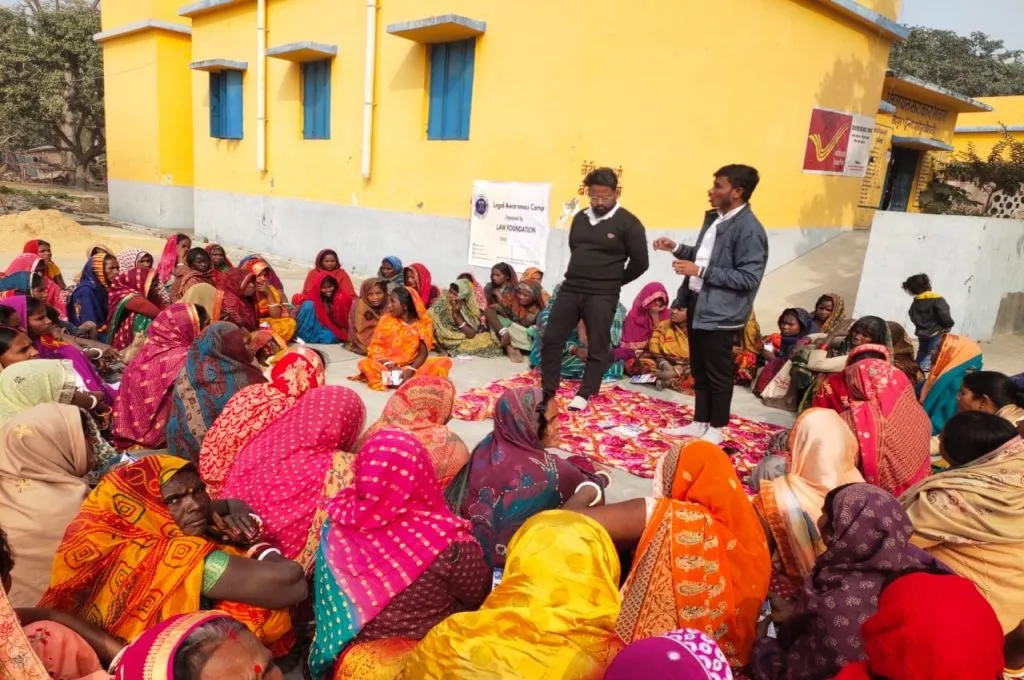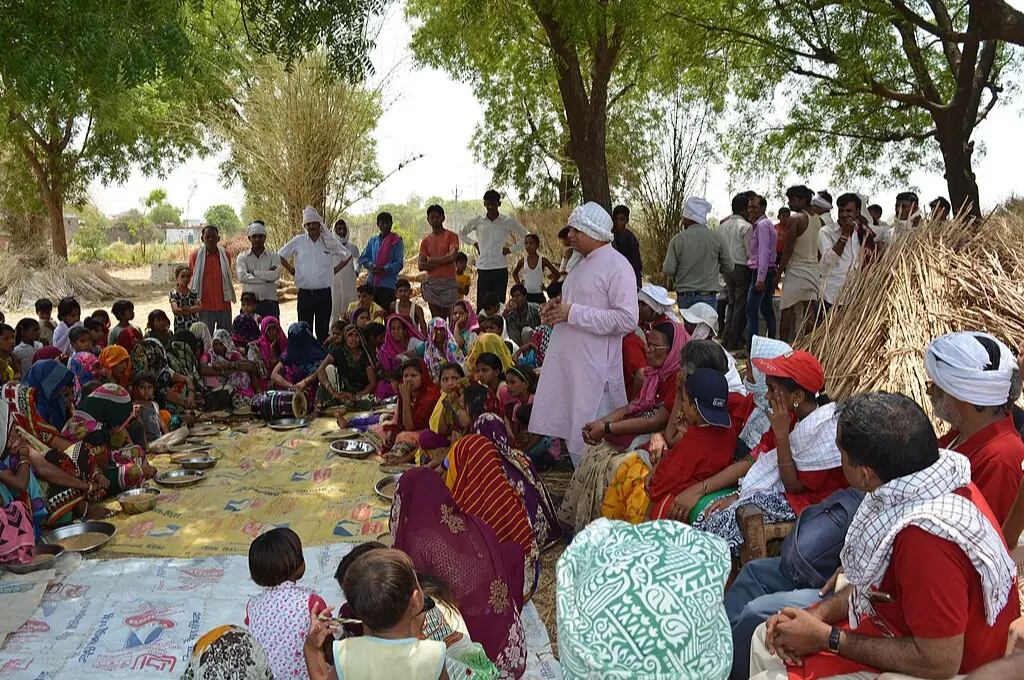Devika Singh is an early childhood care practitioner and a founding member of Mobile Creches, an organisation that pioneered childcare services for the children of migrant construction workers across India. She began as a volunteer at the very first creche set up by Meera Mahadevan near Rajghat in 1969, before the organisation was formally registered.
At a time when the idea of creches for working-class children was almost non-existent, Devika helped build a system of care from scratch—one that followed migrant workers from site to site and gradually grew into a national movement. In this conversation with IDR, she speaks about how she entered the field, the early days of organising creches on construction sites, and the evolution of policy thinking on childcare and social equity in India.
Could you start by telling us about your early years and what led you to work with the children of migrant construction workers?
My journey into working with children wasn’t planned. My earliest memories go back to Lahore, now in Pakistan, listening to my mother’s bedtime stories about stars, faraway lands, and little creatures.
After the Partition, we lived for some time in a refugee camp near the Delhi railway station. Life was uncertain, but we were still encouraged to play and to be children. Our parents gave us that sense of care and safety, even when things were difficult.
That early sense of security and care stayed with me. It shaped how I saw childhood, and what it means for a child to grow up feeling safe and seen. This feeling is what eventually drove me to work with children.
My own education was split between abroad and India. After marriage, I started teaching English Honours students at Loreto College in Kolkata. That’s when I truly felt the contrast between the privileged students inside the college and the children on the streets. It hit me hard. It was then that I began to reflect on how to bring the issue of the rights of women and children from all socio-economic backgrounds to the centre of my discussions and work.
Soon after, I moved to Delhi. I began asking around about who worked with street children and the underprivileged. A friend introduced me to Meera Mahadevan, who had initially started what later became Mobile Creches. She suggested I spend time at the creche she had just set up.
That first day at a construction-site creche was transformative. There were children all around—some crying, some hungry, many with no proper clothes or shelter. Their mothers were nearby, carrying bricks and working on the site, while the children were left on their own. We had no set plan—just a tent, a few basic supplies, and a strong feeling that something had to be done. It was as simple as picking up a child, feeding them, cleaning them, and making sure they were safe for the day. That experience stayed with me. It pulled me in completely. I knew then that this was the kind of work I wanted to do.
From the beginning, we started working very organically. There was no model. The first creche began around 1969–70, opposite Raj Ghat, in a tent. Meera’s husband was working at the Gandhi Peace Foundation on the Gandhi Centenary Exhibition site. Being a Gandhian herself, Meera couldn’t accept the contradiction of constructing a grand structure for Gandhi while ignoring the children of the labourers at the site. She was compelled by her nature to address it immediately, saying, “How on earth can we celebrate Gandhi like this and ignore the children here?”
She insisted that something be done. She persuaded the contractor to put up a tent—anything to prevent the children from being left in that condition. That was the first creche.
What was wonderful was the spirit of the times—the sense that India had just gained freedom, that we had a new Constitution that embodied the values of equality and justice, and that people wanted to seriously look at the state of our country, to ask what was happening and how they could contribute. There was a collective introspection, a desire to unravel and understand the nation we were becoming. It felt like something between Gandhi’s ideals and the energy of a newly independent people that really got things moving. There was a moment in India when everyone genuinely wanted to build a socially just nation. This work has deeply shaped my understanding of justice and social equity.
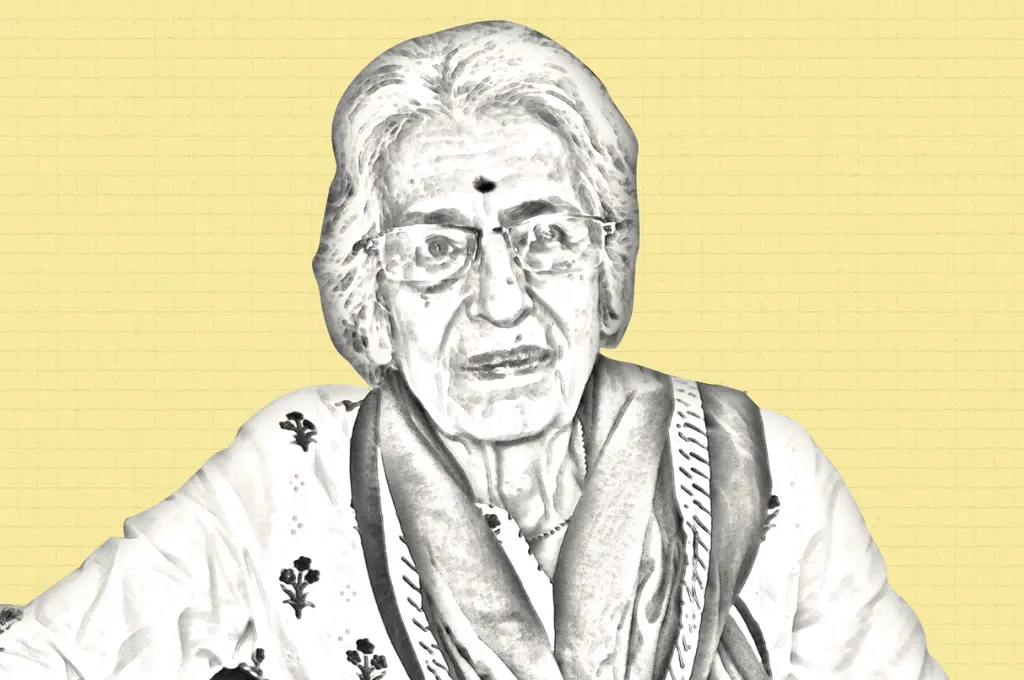
When you first started this work, what did early childhood care mean to you? Was it something people were even thinking or talking about back then?
Initially, even we weren’t entirely sure what the field of early childhood development (ECD) was. Remember that at the time, the right to education didn’t exist, and ECD was not a recognised concept. Our idea was basic—children should not be left unattended on construction worksites. We just knew we had to do something to intervene and bring to them as decent a quality of life as possible. What we were doing were the building blocks of ECD.
Since no one had really done this before at worksites, our initial understanding of what a creche should look like was shaped by middle-class settings—clean, structured, predictable. But at a construction site, it meant responding to daily emergency situations. We were fetching water; collecting food; and organising cots, clothes, and medicine—whatever was needed to get through the day. It was about addressing immediate needs, [attending to] children crying, hungry, in rags, or with diarrhoea. They needed to be picked up, cleaned, fed, clothed, and sheltered. At that time, the mothers were there, hauling bricks and climbing scaffolding, while the children were left around them or carried on their backs in dangerous conditions. We used to store everything in a trunk that we packed up each evening and left with the contractor. It was basic, improvised, but functional. That’s how our mobile model took shape—portable, adaptable, and rooted in immediate care.
Many workers were post-Partition migrants. They had no permanent address, no documents. Enrolling their children in school was a challenge. The state systems—education, health, rationing—were not built with their mobility in mind.
We saw children slipping through the cracks long before policy conversations acknowledged them. Even when Anganwadis came into the picture, they were often under-resourced. What we were doing was not just filling a service gap but making visible what had long been ignored.
What were some of the initial challenges you faced in setting up Mobile Creches? Looking back, what were some of the structural gaps you noticed?
There were many. In the early days, just getting the basics together—water, food, clothes—was a task. Finding women to run the creches was equally difficult.
Building trust meant sitting with mothers, listening to their doubts, involving them in everyday decisions, and showing up, day after day.
But perhaps the bigger challenge was winning over trust. Mothers were understandably hesitant to leave their young children with people they didn’t know. And contractors, too, were often suspicious. Gaining entry to the sites wasn’t always easy. We would be stopped at the gate by the chowkidar [watchman], and on days we managed to speak to someone in charge, we had to explain again and again that we weren’t part of the government, that we weren’t trying to inspect or interfere. They’d look at us and wonder—Are these do-gooders here to create trouble? Are they reporters? Are they from some sarkari [government] department? Why are they poking around? It took time to convince them that all we were asking for was a small patch of land, some water, and space to care for the children who were already at their sites.
With the mothers, the hesitation was more personal. Many of them had never left their children with strangers. Some would ask, “What food are you giving? Whose hands have touched this?” Others would worry about caste boundaries—“Don’t put my child next to that one,” or “Don’t use that cloth—how do I know it didn’t come from a dead child?” There were concerns about the clothes we brought; some feared they were unclean or carried bad luck. Others worried that an evil eye had been cast. These weren’t just superstitions—they were expressions of care and protection shaped by generations of marginalisation. So building trust meant slowing down. It meant sitting with the mothers, listening to their doubts without judgement, involving them in everyday decisions, and showing up, day after day, without fail.
Another major challenge came from the nature of migration itself. Families would often move within days or weeks, sometimes without warning. One day a child would be in the creche, and the next, they’d be gone. These children had often missed early schooling, didn’t have documents, and spoke different languages. State-run schools weren’t equipped to deal with this. There were no programmes to help children catch up, no flexibility around admissions or transfer certificates.
We realised we had to start tracking them—asking around, following families to new worksites, and trying to understand where they had moved and why. This constant movement made it clear how invisible these children were to the system. It also pushed us to think beyond just one creche, to build a model that could move with the workers and respond to the realities of their lives.
Over time, as more sites opened, visibility increased.
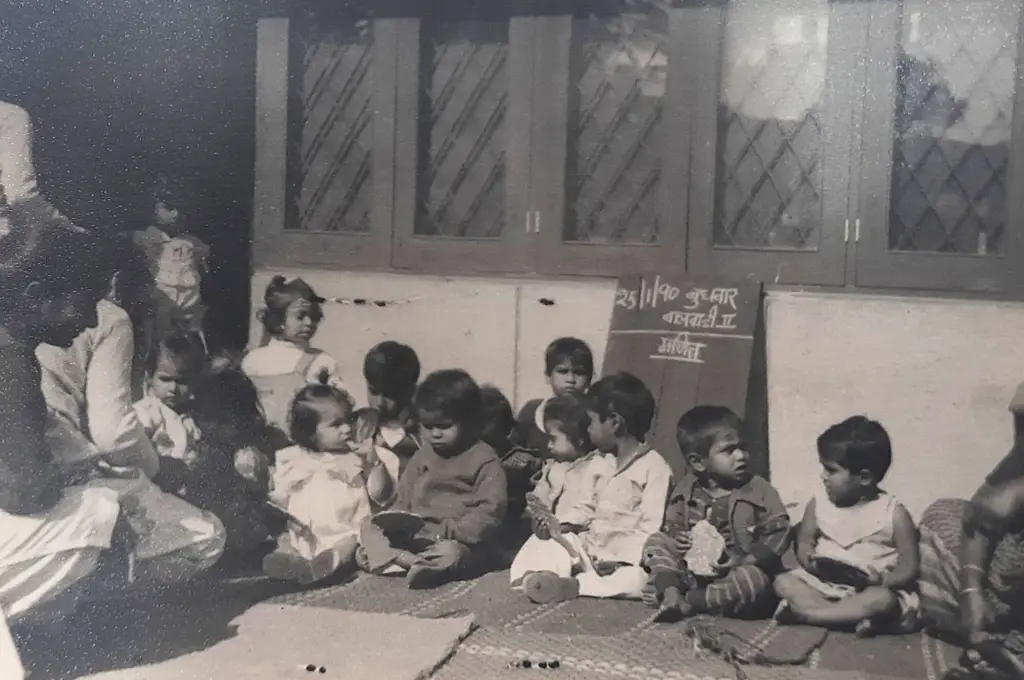
Was there a turning point when this work began to influence policy?
Just getting to the point of reaching construction sites and tracing the paths of migrant workers was a slow process. From there, our focus gradually shifted to examining the laws and trying to understand the situation these communities were caught in. Those kinds of questions naturally led us to connect with other efforts and initiatives that were already in motion.
Around 1971, we connected with labour and workers’ rights activists. People like Subhash Bhatnagar and his wife were pushing for legislation to support migrant labourers. Mobile Creches wasn’t directly involved in that process at first. But in trying to understand the lives of these workers—what they earned, where they went, what kind of contracts they were bound by—we came into contact with this group. And that contact gave us a deeper understanding of the legal and structural dimensions connected to the issue of labourers’ children: migration, interstate labour, the norms, and the gaps. That’s how the idea of a creche found its way into various labour rights legislations.
This collective advocacy and policy discussions would later become the Inter-State Migrant Workmen (Regulation of Employment and Conditions of Service) Act, 1979, which mandates that contractors provide and maintain creches for the children of migrant workers when they are likely to be employed for three months or more. Eventually, when the Building and Other Construction Workers Act (BOCW) came into force in 1996, it also included a mandatory clause for creches at the worksites.
It’s interesting how one small action on the ground, just getting children into a safe space at a construction site, triggered this ripple effect. Being part of that policymaking space really helped open up a conversation around mobile creches and early childhood care. Around the same time, the national Anganwadi programme (Integrated Child Development Services Scheme) was also being conceptualised with significant input from UNICEF, and we helped develop an Anganwadi-cum-creche model. Ideas such as integrating health, nutrition, and early learning were beginning to surface.
It was still very early in India’s journey of building new institutions and social policies, but those early meetings and frameworks created openings for ideas like Mobile Creches to be taken seriously. And then, Meera managed to get Indira Gandhi to visit our creche during an exhibition at Pragati Maidan. From then on, we found ourselves invited into rooms where policy was being shaped—on childcare, nutrition, education.
I think one of the things that helped was that we had mapped out what programmes structurally existed for children. Even in those early years, we conducted a study to identify where the needs were and who the system wasn’t reaching.
As you look back, what has this work come to mean to you—and what do you hope people will carry forward from it?
There was no grand plan. It started with simply responding to the needs of children. But over time, it opened up into something bigger. It became clear that this wasn’t only about children. It was about an entire section of society that had been ignored. When you start looking closely, you begin to ask: Who is doing the building, the sweeping, the cooking—and where are their families? You can’t talk about childcare without talking about labour. About migration. About how women work long hours for low wages. About where they live, what they eat, how invisible they are to systems meant to serve them.
Care, when done honestly, can open doors you didn’t even know existed.
The work taught me to listen. Not just to what people were saying, but to what their lives were telling us. And that’s something I hope people carry forward—the ability to listen, to sit with complexity, and to not turn away just because the answers aren’t quick or easy.
You don’t need to come in with a saviour complex. Don’t assume you’re here to fix something—you’re not. You’re here to learn, to be changed by the work. The questions will keep coming—Where have the children gone? Why do they keep moving? What laws exist? Are they working? Staying with those questions is part of the work too.
If there’s one thing I hope people don’t forget, it’s that showing up matters, [as does] being present and consistent. That’s what built Mobile Creches—not a model or a policy, but a practice of care and early education. And care, when done honestly, can open doors you didn’t even know existed.
—
Know more
- Understand how access to free childcare at the workplace can reduce economic vulnerability and help disrupt cycles of poverty.
- Read this interview with Sushma Iyengar, founder of Kutch Mahila Vikas Sangathan, on building women-led collectives in rural India and why empowerment cannot be limited to economic change.
- Listen to this podcast episode on the education and care challenges faced by India’s migrant children, featuring researcher Gayatri Sethi.


